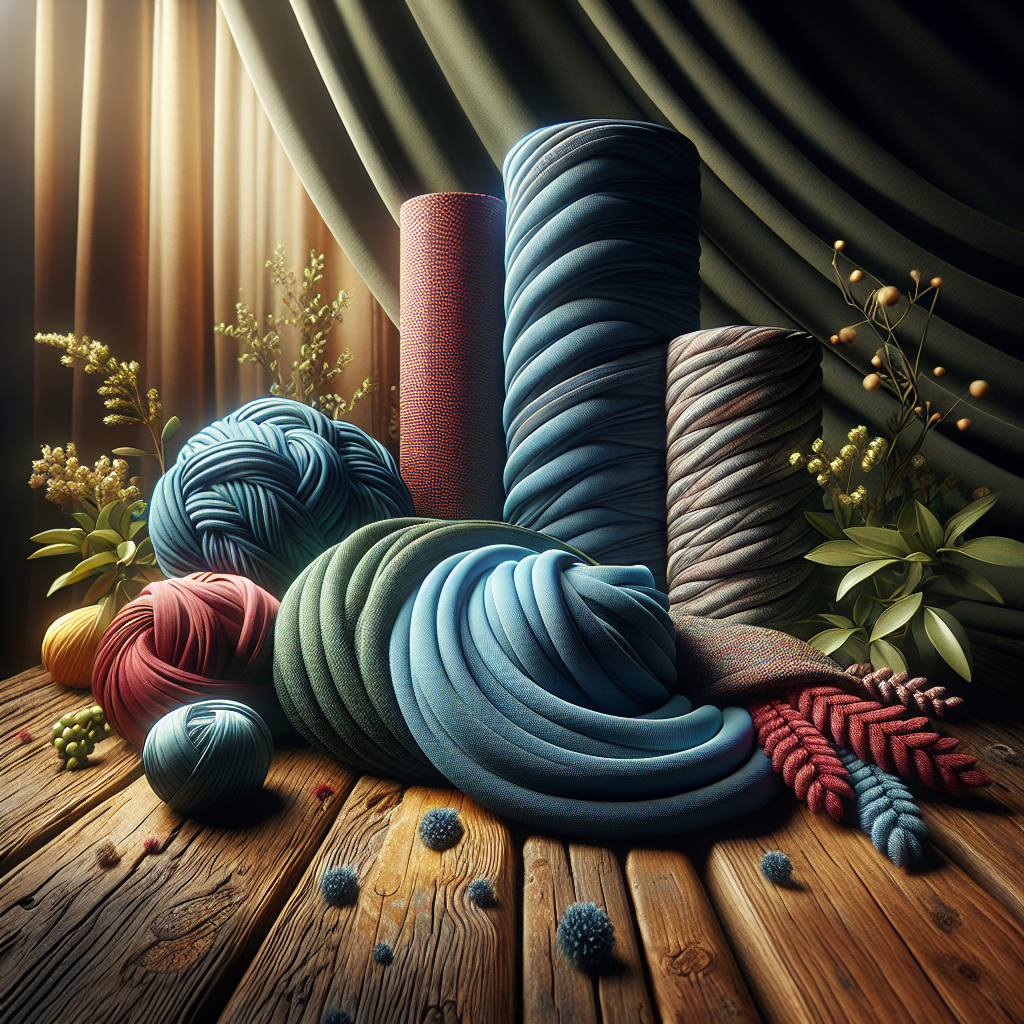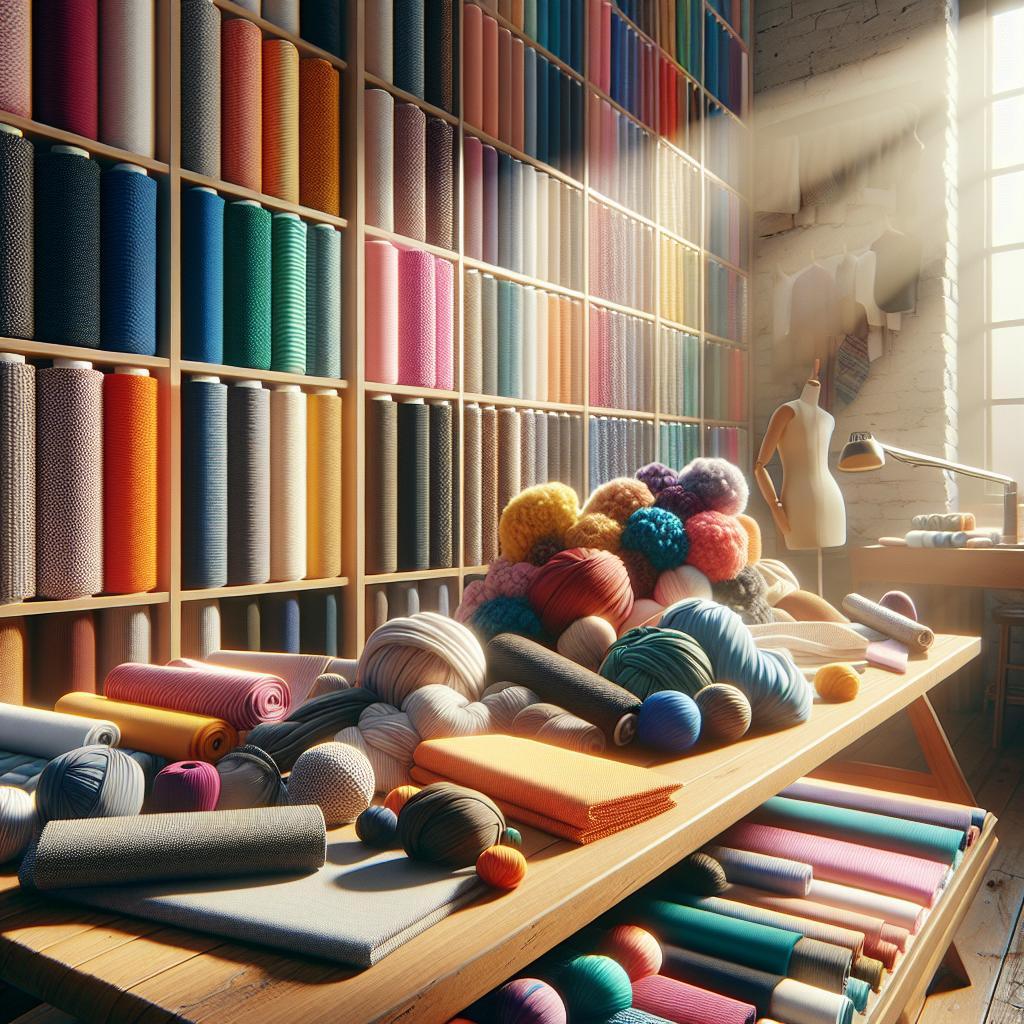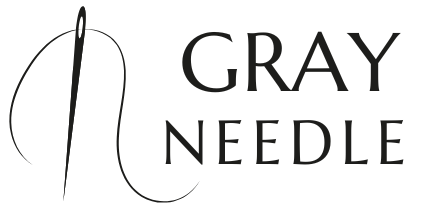When diving into the world of sewing, it’s essential to grasp the unique properties of stretch fabrics. These materials, often made from blends of spandex, elastane, or lycra, are designed to provide exceptional flexibility and comfort. Understanding their characteristics can significantly enhance your sewing experience and outcomes.
Stretch fabrics come in various types, each with distinct features:
- Knits: These fabrics are created by interlocking loops of yarn, allowing for considerable stretch. They are ideal for casual wear, activewear, and comfortable clothing.
- Wovens: While traditional woven fabrics do not stretch, those with a blend of elastic fibers offer some give. They are commonly used for structured garments that require a bit of flexibility.
- Blends: Many stretch fabrics are blends, combining natural fibers like cotton with synthetic fibers for enhanced elasticity, durability, and comfort.
Understanding these characteristics not only aids in fabric selection but also informs your sewing techniques. For example, using the right needle type and stitch can make a significant difference in the final product. To delve deeper into these aspects, visit our website to learn more and get started today! Click here.
Essential Tools for Sewing Stretch Fabrics

Equipping yourself with the right tools is crucial for successfully sewing stretch fabrics. The proper tools not only make the sewing process smoother but also enhance the quality of your finished projects. Here are some essential tools that every sewing enthusiast should consider:
- Ballpoint Needles: Unlike regular needles, ballpoint needles have a rounded tip that gently slides between the fabric threads, preventing snagging and damage. They are ideal for sewing knits and other stretchy materials.
- Walking Foot: This specialty foot helps to feed multiple layers of fabric evenly through the sewing machine. It is particularly useful when working with slippery or stretchy fabrics, as it reduces the risk of shifting.
- Stretch or Zigzag Stitch: When sewing stretch fabrics, it’s essential to use stitches that allow for movement. Stretch stitches or a zigzag stitch provide flexibility, preventing seams from breaking when the fabric is stretched.
- Clear Ruler and Rotary Cutter: Accurate cutting is vital for stretch fabrics. A clear ruler helps to measure and align your fabric, while a rotary cutter allows for precise and clean edges.
- Fabric Clips: Instead of using pins, which can distort stretchy fabrics, consider using fabric clips. These clips hold the layers together without creating holes or causing the fabric to shift.
Having these essential tools at your disposal can significantly enhance your sewing experience and lead to better results when working with stretch fabrics. With the right equipment, you can tackle any project with confidence!
Techniques for Cutting Stretch Fabrics Accurately

Accurate cutting is fundamental when working with stretch fabrics, as proper cuts ensure that your pieces fit together seamlessly. Here are some effective techniques to enhance your cutting skills:
- Pre-Wash Your Fabric: Before cutting, always pre-wash your stretch fabric to remove any sizing or shrinkage. This step ensures that your final garment maintains its shape and fit after washing.
- Use a Cutting Mat: A self-healing cutting mat provides a safe surface that protects your table while allowing for precise cuts. Pair it with a rotary cutter for the best results.
- Mark Your Fabric: Use fabric chalk or a fabric marker to clearly mark your cutting lines. This ensures accuracy and helps prevent any mistakes during the cutting process.
- Cut with the Stretch Direction: Be mindful of the fabric’s stretch direction. Always cut in a way that allows the fabric to stretch in the intended direction of the garment, typically along the lengthwise grain.
- Utilize Weights Instead of Pins: When laying out your pattern pieces, use weights to hold them in place instead of pins. This method reduces the risk of distortion and ensures clean edges.
Implementing these techniques will help you achieve precise cuts, resulting in a better-fitting and more professional-looking final product. With practice, you’ll master the art of cutting stretch fabrics!
Best Sewing Machine Settings for Stretch Fabrics

Choosing the right sewing machine settings is crucial when working with stretch fabrics. These fabrics require specific adjustments to ensure that your stitches are secure, elastic, and visually appealing. Here are the best settings to consider:
- Stitch Type: Opt for a zigzag stitch or a stretch stitch instead of a straight stitch. These stitches allow the fabric to stretch without breaking the thread, maintaining the integrity of your seams.
- Stitch Length: Set a longer stitch length, typically between 2.5 to 3.5mm. A longer stitch helps accommodate the stretch of the fabric, preventing puckering and ensuring smooth seams.
- Thread Tension: Adjust your thread tension to a lower setting. Stretch fabrics can be more forgiving, and reducing tension helps avoid the risk of breaking the thread during sewing.
- Needle Choice: Use a ballpoint needle or a stretch needle, as these are designed to penetrate knit fabrics without causing snags or damage. They create a clean stitch that moves with the fabric.
- Foot Pressure: If your machine has adjustable foot pressure, reduce it slightly. This adjustment allows the fabric to feed smoothly through the machine without stretching out of shape.
By fine-tuning these settings, you can achieve professional results and enjoy a smoother sewing experience with stretch fabrics. Remember to test your settings on a fabric scrap before starting on your main project to ensure everything works perfectly!
Finishing Techniques for Stretch Fabric Edges

Finishing the edges of stretch fabrics properly is essential to prevent fraying and to maintain the fabric’s elasticity. Here are some effective techniques to ensure your edges look clean and professional:
- Overlocking: Using an overlocker (serger) is one of the best methods for finishing stretch fabric edges. It trims the fabric while creating a secure stitch that stretches along with the fabric. This technique is ideal for knit garments.
- Stretch Bias Tape: Applying a stretch bias tape to the raw edges not only finishes them but also adds a decorative touch. It can help stabilize the seams while allowing the fabric to maintain its stretch.
- French Seams: For a clean finish, consider using French seams. This technique encloses the raw edges, making it a perfect choice for lightweight stretch fabrics.
- Folded Hem: A simple yet effective method is to fold the raw edge twice and stitch down. This method provides a sturdy finish while maintaining the stretch of the fabric.
- Fabric Glue: For quick and easy finishes, fabric glue can be a great option. It is suitable for hems and seams where a stitch may not be necessary, especially in areas that require a bit of flexibility.
Utilizing these finishing techniques will not only enhance the appearance of your projects but also increase their durability. Experiment with different methods to find what works best for your specific fabric and project needs!
Common Mistakes to Avoid When Sewing Stretch Fabrics
When working with stretch fabrics, it’s easy to make mistakes that can lead to frustration and disappointing results. Here are some common pitfalls to watch out for, along with tips to avoid them:
- Using the Wrong Needle: Always opt for a ballpoint needle when sewing stretch fabrics. Using a regular needle can cause skipped stitches and damage the fabric.
- Inadequate Tension Settings: Ensure your machine’s tension is appropriately adjusted. Too tight a tension can lead to puckering, while too loose can cause loose stitches. Test on a scrap piece first!
- Ignoring Fabric Grain: Pay attention to the grainline of the fabric. Cutting pieces on the bias or against the grain can affect how the fabric stretches and drapes.
- Not Using Enough Pins: Stretch fabrics can shift easily while sewing. Use plenty of pins or clips to secure your fabric layers, preventing them from slipping out of alignment.
- Skipping the Test Sew: Always test your stitches on a scrap piece of the same fabric before diving into your project. This helps identify any adjustments needed for tension, stitch type, or needle choice.
By being aware of these common mistakes, you can enhance your sewing experience and produce high-quality results. With the right techniques and knowledge, you’ll be well on your way to confidently creating stunning garments from stretch fabrics. Visit our website to learn more and get started today! Click here.

